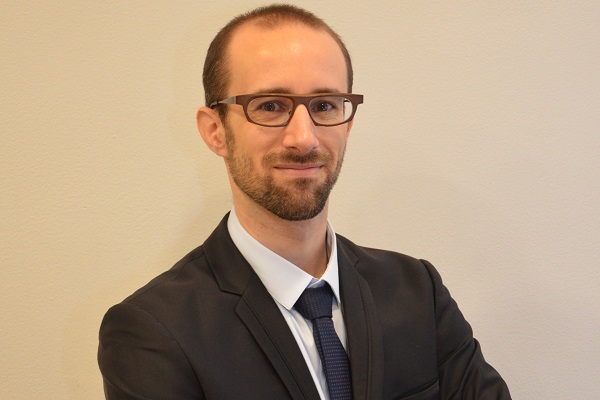|
|
The Gem Lab That Refuses to Grade Synthetics
The LFG in Paris has taken a stand against man-made diamonds. Its director, Aurélien Delaunay, explains why.
May 6, 2019 8:25 AM
By Marie Chabrol
|
|
|

RAPAPORT... The French Gemmological Laboratory (LFG) is the oldest of
its kind in the world. Founded in 1929, it came into being after the arrival of
cultured pearls on the market prompted more than 300 pearl dealers from Paris’s
9th arrondissement to call for a way to differentiate them from natural pearls.
The French government managed the lab from 1936 until 2010, when it was sold to
the French Union of Jewellery (UFBJOP), today its majority shareholder.
Aurélien Delaunay has been its director since July 2018.
What is your lab’s specialty?
The LFG’s strength is that it is multidisciplinary. Our
specialty is our privileged link with the University of Nantes, known worldwide
for its research wing in gemology and mineralogy. Prof. Emmanuel Fritsch is
also our external scientific adviser, with whom we set up research projects,
particularly on diamonds.
We are also the only laboratory that refuses to grade
synthetic diamonds. We offer our services to an extremely varied clientele,
ranging from the key houses of the Place Vendôme to auction houses and museums.
We are particularly proud to have been able to warn about the discovery and
presence of synthetic chemical vapor deposition (CVD) brown diamonds. We have
also published many articles with Emmanuel Fritsch on chameleon diamonds. Our
latest discovery was a natural type IIa/IaB zoned diamond. We collaborate with
[Gemological Institute of America (GIA) journal] Gems & Gemology, [The
Gemmological Association of Britain’s] Journal of Gemmology and
the French Journal of Gemmology.
Why did your lab decide not to grade synthetic diamonds?
It is a joint decision of the profession and the UFBJOP not
to grade synthetic diamonds, unlike other international laboratories. These
stones do not have to be evaluated on the same scale as natural ones, because
they are an imitation of the diamond and must remain so.
This decision is unanimous in the profession except for
those who want to promote this [lab-grown] material. But it must be remembered
that the increase of synthetic diamonds on the market will bring down their
price. Also, natural diamonds will always be desired for what they are, a rare
and precious natural resource. The question of the grading of synthetics
matches a logical view of things: If they are graded, this must also be done
for other synthetic stones. Also, not grading these stones helps to
differentiate and isolate them.
How are you dealing with the increase of undisclosed
lab-grown diamonds on the market?
We regularly analyze synthetic diamonds, but we cannot say
that their proportion has increased in our volume of analyses. We saw a lot
between 2012 and 2013, but with the awareness of the diamond industry and the
development of analytical tools, things have stabilized. The improved sourcing
of our customers has clearly contributed to this decrease. Also, we might have
0% synthetic stones in a batch, or up to 20% when [the batch] is not correctly
sourced. But our annual average is less than 1% synthetic in melee batches. It
can nevertheless be said that problems still come from India, where the
presence of synthetic diamonds in lots is widely known.
In which areas do you think the industry needs more
training?
The presence of synthetic diamonds on the market is a major
issue. But there is much work to do on the terminology of [describing] gems, as
well as on the disclosure of the different treatments. In France, we are
fortunate to have a law, Decree No. 2002-65, which clarifies things. But this
is not the case everywhere.
What are the main challenges facing the diamond industry?
For us, the provenance of the gems remains a big question
for our customers. But among the challenges of the industry are undetectable
treatments such as low-temperature heating, irradiation of tourmaline, and
heating aquamarines or citrines.
Our customers want total transparency. Laboratories will be
more and more important in this process. They should be able to analyze very
small gems, loose or set in jewelry, but also all the other materials that are
submitted to it.
What are your plans for 2019?
Today, we hope to make ourselves better known to individuals
wishing to obtain clear information about their gems. And we also want to grow
internationally. We will exhibit at GemGenève [in May], where we will offer
on-site analyses.
We will also increase our conferences, with a frequency of
four per year, inviting international speakers such as [lecturer, editor and
founder of the Portugal Gemas Academy] Rui Galopim de Carvalho or [curator of
Paris’s Mineralogy Museum] Eloise Gaillou.
This article was first published in the May 2019 issue of Rapaport Magazine.
Image: Aurélien Delaunay.
|
|
|
|
|
|
|
|
|
|
Tags:
Aurélien Delaunay, Eloise Gaillou, France, French Gemmological Laboratory, French Journal of Gemmology, French Union of Jewellery, GemGenève, Gemmological Association of Britain, Gemological Institute of America, GIA, journal of gemmology, lab-grown diamonds, Laboratories, Labs, LFG, Marie Chabrol, Mineralogy Museum, Portugal Gemas Academy, Rui Galopim de Carvalho, Synthetics, UFBJOP
|
|
|
|
|
|
|
|
|
|
|

|
|